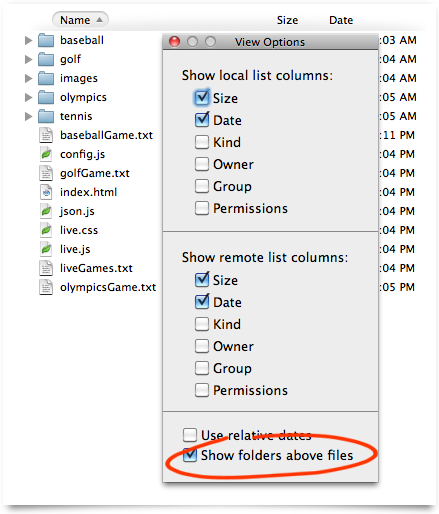Forklift 2 Show Hidden Files
5/7/2019by admin

Windows hides many files and folders by default, preventing users from deleting or modifying files they shouldn’t touch. But you can make Windows show these hidden files by changing a single setting.
'Extreme Forklifting 2 Is the Absolute Stupidest Game. I Can't Stop Playing' - Touch Arcade. Always dreamed of becoming a forklift operator? - Put pallets down! This is the game you never knew you wanted!
- How to see hidden files in MS-DOS and the Windows command line or Command Prompt.
- ForkLift knows git and will show you the status of individual files. You can add, commit, push, and pull. Open in Terminal. Hidden Files. Make hidden files.
RELATED:How to Hide Files and Folders on Every Operating System
It’s easy to make any file hidden, too. Just right-click it, select “Properties”, and toggle the “Hidden” attribute on or off. On the ribbon on Windows 8 and 10, click the “Hide selected items” button to quickly make files and folders hidden or visible.
Show Hidden Files on Windows 8 and 10
This option is easily accessible in File Explorer on Windows 8 and 10.
Click the “View” tab on File Explorer’s ribbon and click the “Hidden items” checkbox in the Show/hide section. File Explorer will immediately show hidden files and will remember this setting until you change it.

Show Hidden Files on Windows 7
This option is a little more hidden on Windows 7, where it’s buried in the Folder Options window.
Click the “Organize” button on Windows Explorer’s toolbar and select “Folder and search options” to open it.
Click the “View” tab at the top of the Folder Options window. Select “Show hidden files, folders, and drives” under Hidden files and folders. Click “OK” to save the new setting.
Good charlotte the young and the hopeless zip. Here you can download good charlotte young Shared files found Uploaded on TraDownload and all major free file sharing websites like 4shared.com, uploaded.to, mediafire.com and many others. Just click desired file title, then click download now button or copy download link to browser and wait certain amount of time (usually up to 30 seconds) for download to begin.
This options window is also accessible on Windows 8 and 10—just click the “Options” button on the View toolbar in File Explorer. But it’s quicker to easily toggle hidden items on or off using the ribbon.
This window is also accessible via the Control Panel on any version of Windows. Head to Control Panel > Appearance and Personalization > Folder Options. On Windows 8 and 10, it’s named “File Explorer Options” instead.
View Protected Operating System Files on Windows 7, 8, and 10
RELATED:Make a Super Hidden Folder in Windows Without any Extra Software

Windows has two different types of hidden files: Normal hidden items, and protected operating system files. When you show hidden files and folders, Windows will continue to hide protected operating system files. These are hidden files with the “system” attribute.
Show Hidden Files Mac
These files are “protected” for a reason. They’re important system files and deleting or modifying them could damage your operating system, potentially even making Windows unbootable. But, if you know what you’re doing and you need to view these protected operating system files, there’s a setting you can change. We don’t recommend doing this unless you know you need to access one of these files or folders for some reason.
First, open the Folder Options window. On Windows 8 and 10, click the “Options” button on the View toolbar. On Windows 7, click Organize > Folder and search options.
Click the “View” tab. Uncheck the “Hide protected operating system files (Recommended)” box.
Show Hidden Files Windows 10
Windows will warn you that deleting or editing protected operating system files could break your operating system. If you know what you’re doing, click “Yes” to continue.
Click “OK” to save your settings. Windows will show you protected operating system files as well as normal hidden files.
Return to the Folder Options window and re-enable the “Hide protected operating system files (Recommended)” checkbox if you ever want to hide these files once again.
Most Viewed Pages
- Metal Slug Anthology Ppsspp Cheats
- Shingeki No Kyojin Episode 23 Sub Indo Samehadaku Dragon
- Download Program Do Diagnostyki Opel Zafira
- Flexisign Pro 8.6 V2 Crack
- Descargar Xampp Control Panel V3.2.1
- Potty Racers 3 New Space Missions Hacked Games
- Download Las Aventuras De Kaliman Pdf
- Computer Repair Software Free Download For Windows 7
- Cara Download Lagu Itunes Gratis Di Android
- Download Inpage 2005 Setup Urdu Press Software Software
- How To Download Hulu On Hisense Smart Tv
- Musica Viva La Vida Mp3 Download Coldplay Para Baixar
- Free Download Powersuite Eltek
- Edjing Pro Apk Full Unlocked Free Download
- Download Lirik Lagu Nike Ardila Panggung Sandiwara
- Download Mod Bus Euro Truck Simulator 2 Versi Indonesia
- Download Running Man Episode Exo Subtitle Indonesia
Copyright © 2019 high-powerivy.